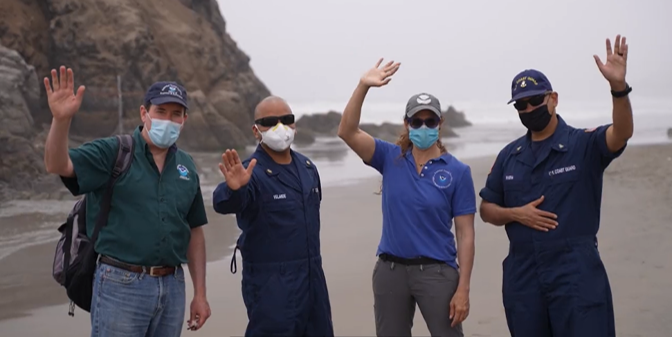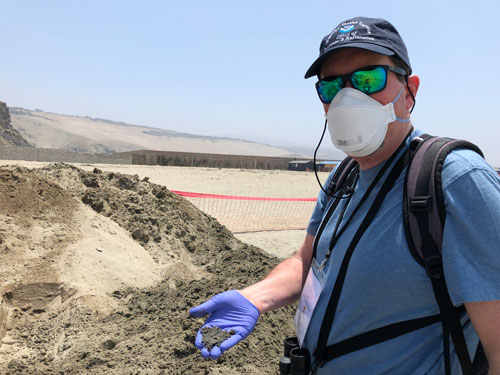OR&R Spill Scientist Shares International Experience with Pacific Region Spill Responders
NOV. 7, 2022 — Two significant oil spills that occurred in the late 1980s—the barge Nestucca, which spilled more than 230,000 gallons of No. 6 fuel oil into the Pacific Ocean near Grays Harbor, Washington, and the Exxon Valdez spill in Prince William Sound, Alaska—led to the formation of an oil spill task force in 1989 between Washington State and British Columbia. In subsequent years, the states of California, Oregon, and Hawaii joined, forming the Pacific States/British Columbia Oil Spill Task Force.

At the Task Force’s 33rd annual meeting on Nov. 2, 2022, a number of presenters shared updates on activities, tools, resources, and case studies in their areas. John Tarpley, Regional Operations Branch chief in OR&R’s Emergency Response Division, shared his experience supporting the government of Peru last February, in its response to a significant oil spill that occurred at the offshore mooring for the La Pampilla crude oil refinery in Lima. The spill oiled more than 35 miles of shoreline, created a serious health risk at more than 24 beaches, and impacted five marine protected areas.
Tarpley and Scientific Support Coordinator Brandi Todd were part of a nine-person team that the U.S. National Response Team mobilized to Peru. They spent 16 days supporting this response.
In his presentation, Tarpley provided an overview of the situation the team faced, some of the serious challenges they dealt with, and recommendations they conveyed to the response agencies in Lima. A number of the lessons learned at this spill could be applied to spills in the Pacific region. For example:

- Responders need to know their federal and state laws and regulations, as well as their limitations.
- Good communication and coordination with the responsible party and other agencies is critical to mission success.
- For best preparedness, conduct training and exercises jointly across industry, government, and non-governmental organizations.
- Develop a rapid scientific process to assess the reopening of commercial, recreational, and subsistence fisheries.
- Create and implement a strong public outreach plan to coordinate the above.
The annual meeting drew a record 250+ participants from federal, state, tribal, and local governments, academia, the oil industry, and non-governmental organizations. All seemed to agree that networking and “knowing your interagency colleagues” ahead of a spill incident helps everyone who works to prevent, respond to, restore, and recover from oil spills in the Pacific region.
